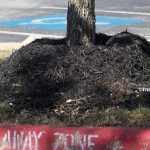hould we fertilize our lawns with “Winterizer?”
Thanks to Mark Banigan for this great question!
Some of the chain-store “winterizing” fertilizers have a higher amount of phosphorous and potassium. More phosphorus and potassium are not necessary for us here in Central Texas or in the South. We want to use a product that’s higher in nitrogen. That’s the first number on the fertilizer bag. N (nitrogen)-P (phosphorus)-K (potassium).
You’ll see that some bags of fertilizer have a really high ratio of nitrogen, like 32-0-10. Lawns do need more nitrogen than any other nutrient, but is 32% too high? It sounds kind of high, but no, not if it is used properly. With a fertilizer this high in nitrogen, use a lower amount on your lawn. Read the instructions carefully. Generally, a 8-2-4 or similar ratio is better for us.
When is the best time to fertilize, and how often? We want to fertilize in very late summer and early fall, once it’s no longer blazing hot, and the nights have cooled down. Fall fertilizing gives lawns nutrients to help them build strong roots and underground growth before it goes dormant in the winter, so that it has a jump start next spring.
You can fertilize again in spring, but no sooner that mid-to-late April. You want the grass to be actively growing. Feeding too soon does nothing except fertilize weeds! Should you fertilize any other time? More fertilizer means more green, but it also means more growth, more mowing, and more watering, so try to find a delicate balance. You shouldn’t need to fertilize more than twice a year.
And after this year’s drought, some lawns may be dead, or they may be just dormant, so should they be fertilized at all? Again, it’s kind of a delicate balance again with those weed seeds ready to take over where the grass has thinned or left bare patches. If you fertilize now, you’ll bring back the weed seeds, but you also will help your lawn a little bit. For this fall 2011, I’d go ahead and skip it this time and fertilize after tax day.








 Joe Denton
Joe Denton Justin Kasulka
Justin Kasulka Justin Kasulka’s Plant List
Justin Kasulka’s Plant List Daphne Richards
Daphne Richards Trisha Shirey
Trisha Shirey How Not to Kill Your Trees
How Not to Kill Your Trees